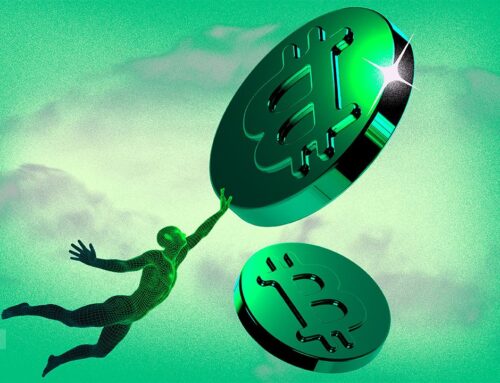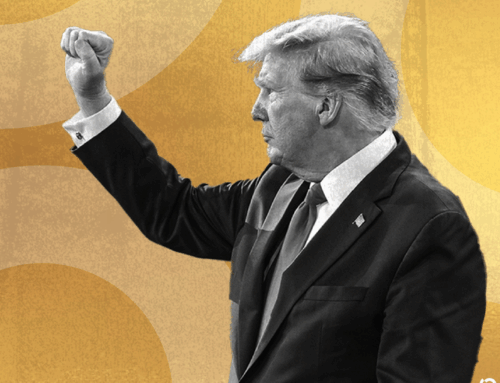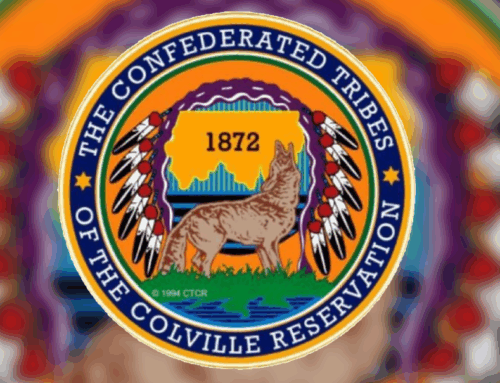The Narrow Path: Why Choosing Hard Things Is Your Best Investment
October 5, 2025
There are few things in this world that I enjoy more than observing my sons outshine their father. And I’m not just talking about outperforming me at their ages, 21 and 19; that would be an easy task, because at their ages, I was only excelling at what some of my teachers referred to as “untapped potential,” when they were kind, or “underachievement,” when they were honest.
No, the younger is already smarter than I ever was or will be, and more importantly, he has such a heart for true Justice that I’m in awe. His elder brother, meanwhile, possesses a downright eerie EQ that has been so exceptional since a very young age that he has taught me more about empathy and compassion than anyone else, or any of the many books I’ve had to read on the topic, to be a functioning human being.
He also has a trait that I seek to emulate that I’m inclined to share with you today and implore you to consider exercising: the pursuit of hard things.
For example, at the age of 13, he chose to switch sports, from baseball, where he had grown to excel, to lacrosse. For those of you who’ve been cursed blessed to encounter the world of competitive youth sports, and especially lacrosse, you know that this is generally considered too late. I cautioned my son that if he were to make the switch, he’d have to work much harder than the other kids, just to bring his skills to the point of competent, much less competitive. He did.
His hard work paid off many times over, making teams that seemed beyond his reach, captaining his state championship high school team, and earning the opportunity to play college lacrosse at a solid Division II school, despite being undersized. After his freshman year, his coach told him that he was excelling at every phase of the game—footwork, stick skills, “lacrosse IQ”—but the one that is the most challenging to overcome is his size.
Coach challenged him to put an additional 20 pounds of muscle on his 150-pound frame over the summer, and he did, with the help of my wife’s 6,000-calorie-per-day diet and lifts so heavy they’d have put me in the hospital.
Then, he made an even harder decision: to leave his sport, his team and his school, recognizing that in order to excel in his chosen major, he’d need to double down on his studies, internships, work in his field, and do it at a school that had an even better ranking for his major, the University of Georgia (Go ‘dawgs!).
But with the peak competitive push of collegiate sports behind him, he purposed himself to pursue something that would be his most challenging physical and psychological feat yet—running a marathon. As a non-runner, this was challenging enough, but he also decided he wanted his first to be a sub-four-hour time. Why not? So, with ChatGPT as his only training partner, he did the work, and I was able to see him cross the finish line on a muggy August morning in Atlanta, where his time read three hours and 58 minutes.
His sense of satisfaction lasted no more than two hours, and within two days, he’d already began training for some crazy weightlifting / running combo competition that takes place the first weekend in November.
So, what does he get out of this persistent pursuit of higher performance—of choosing to do the harder (and harder) thing—and what can we? And why not?
Why—And Why Not—Push Out Of Our Comfort Zone?
1. Not for toughness, but for adaptability
I don’t think there’s any inherent virtue in “being tough” any more than there is in being physically attractive, but choosing discomfort rewires our relationship with fear and increases our neurological resilience.
When we voluntarily choose difficulty, we’re engaging in what neuroscientists call “stress inoculation.” Controlled exposure to discomfort (cold plunges, running when you’re exhausted, even knowingly navigating financial uncertainty) activates the sympathetic nervous system—but because we chose it, we simultaneously engage the prefrontal cortex, which regulates emotional response. Over time, this builds what researchers call “distress tolerance,” as the brain literally rewires to interpret challenge as manageable rather than catastrophic.
For example, three to four times every week, I subject myself to five minutes of discomfort via a cold plunge—an inflatable tub in my basement that is set to 41 degrees. As I told my friend whose expertise is in learning and development, among other things, “Dude, it doesn’t get any easier! The first two minutes, in particular, are pure torture, and I need to talk myself into it every single time.”
“Yup, that’s how it’s supposed to work,” he retorts, before going on to explain the benefits of triggering cold-shock proteins (with an emphasis on the work shock), the release of dopamine that lasts for hours, and the cardiovascular benefits that have helped me reduce the severity and frequency of chronic migraines more than any drug or neurological regimen I’ve tried in 30 years.
The Stoics called this premeditatio malorum—the premeditation of adversity. By choosing hard things voluntarily, we remove fear’s greatest weapon: surprise. You’re not building “toughness” as some macho badge. You’re building optionality. When life inevitably delivers involuntary hardship (illness, job loss, grief), your brain has evidence that you can handle discomfort—because you’ve been practicing.
In essence, choosing to do hard things repetitively cultivates a core competency of doing more hard things. Because, in case you haven’t noticed, life doesn’t actually get easier; we just get better at it.
2. Not for achievement, but for autonomy
Achievement for achievement’s sake tends to ring hollow. You’ve heard all the stories—stories that frankly don’t seem believable—about Super Bowl winners and Olympic athletes who, mere moments after their crowning achievements, tend to experience a hyperbolic erosion of satisfaction (called hedonic adaptation).
But that doesn’t mean nothing has been gained from said achievement. Far beyond the free trip to Disney World and the hardware, the voluntary pursuit of hardship restores agency in an overstimulated world.
Our modern environment is designed to eliminate friction. Algorithms predict what we want before we know we want it. One-click purchasing. Doom scrolling. The result? A dopamine system in chaos. Neuroscientist Andrew Huberman’s research shows that when we get rewards without effort, our baseline dopamine drops—meaning we need more stimulation to feel less satisfied.
But when we choose hard things, especially hard things without guaranteed rewards, we restore what’s called “dopamine baseline.” The effort itself becomes the reward signal.
Psychotherapist and author, Viktor Frankl (who survived Auschwitz), for example, understood that meaning doesn’t come from avoiding suffering—it comes from choosing our relationship to it. In Man’s Search for Meaning, Frankl writes: “Between stimulus and response there is a space. In that space is our power to choose our response.”
I’ve been so inspired by two financial advisors I’ve had the privilege to coach this year, each of whom chose to leave stable, rewarding jobs with plentiful personal and financial rewards, simply because those environments provided them with less agency than the more entrepreneurial paths, the veritable restart they’ve chosen instead.
It’s because they know that uncertainty chosen freely is psychologically different from financial uncertainty imposed upon you. This isn’t semantics; it’s the difference between agency and victimhood.
3. Not for self-improvement, but for self-forgetting
Here’s where we really dive into some nuance neuroscience, because the optimal end of choosing hard things isn’t to post it on the ‘Gram and the momentary dopamine hits from a handful of distant likes. It’s because the choice of discomfort dissolves the illusion of separation.
(Huh?)
There’s emerging research in contemplative neuroscience showing that intense physical challenges (endurance sports, cold exposure, breathwork) temporarily quiet the default mode network (DMN)—the part of the brain responsible for self-referential thinking, rumination, and the sense of being a separate self.
When the DMN quiets, people report feelings of interconnection, present-moment awareness, and what psychologists call “self-transcendence.” This isn’t woo-woo pop psychology—it shows up on fMRI scans. The brain stops narrating the story of “me” and starts directly experiencing a more present reality.
Every wisdom tradition has a version of this: the ego is an illusion maintained by comfort. Buddhism calls it dukkha—the suffering that comes from clinging to a false sense of a permanent, separate self. Christian mystics practiced asceticism as a path to personal growth. Indigenous rites of passage involved physical ordeal.
Why? Because when you’re at mile 23 of a marathon, or 90 seconds into ice water, or staring at a spreadsheet showing zero revenue for month three of your new business venture—the mental chatter stops. You’re not rehearsing the past or anxious about the future. You’re just here, in your body, in what is referred to as a flow state.
The real gift of voluntary hardship isn’t that you “accomplish” something, therefore, but that you get brief moments of relief from the exhausting job of being “you.” The self-improvement industrial complex has it backward: we don’t choose hard things to become better versions of ourselves (although that’s a likely result). We choose them to occasionally escape the tyranny of selfhood altogether.
The Narrow Path
The question isn’t whether you should choose hard things. Life will choose them for you eventually, through illness, loss, economic upheaval, or the entropy of aging. The question is whether you’ll practice first, while you still have the luxury of choosing which hard things, and when.
You don’t need to run a marathon or start a business or plunge into ice water. But you probably know what your hard thing is. It’s the one you’ve been avoiding because it’s uncomfortable, uncertain, or inconvenient. It’s the conversation you’re not having. The investment you’re not making (in your portfolio or yourself). The risk you’re not taking because the safe path is so much easier.
The narrow path isn’t narrow because few people can walk it. It’s narrow because few people choose to.
What if you did?
Search
RECENT PRESS RELEASES
Related Post




